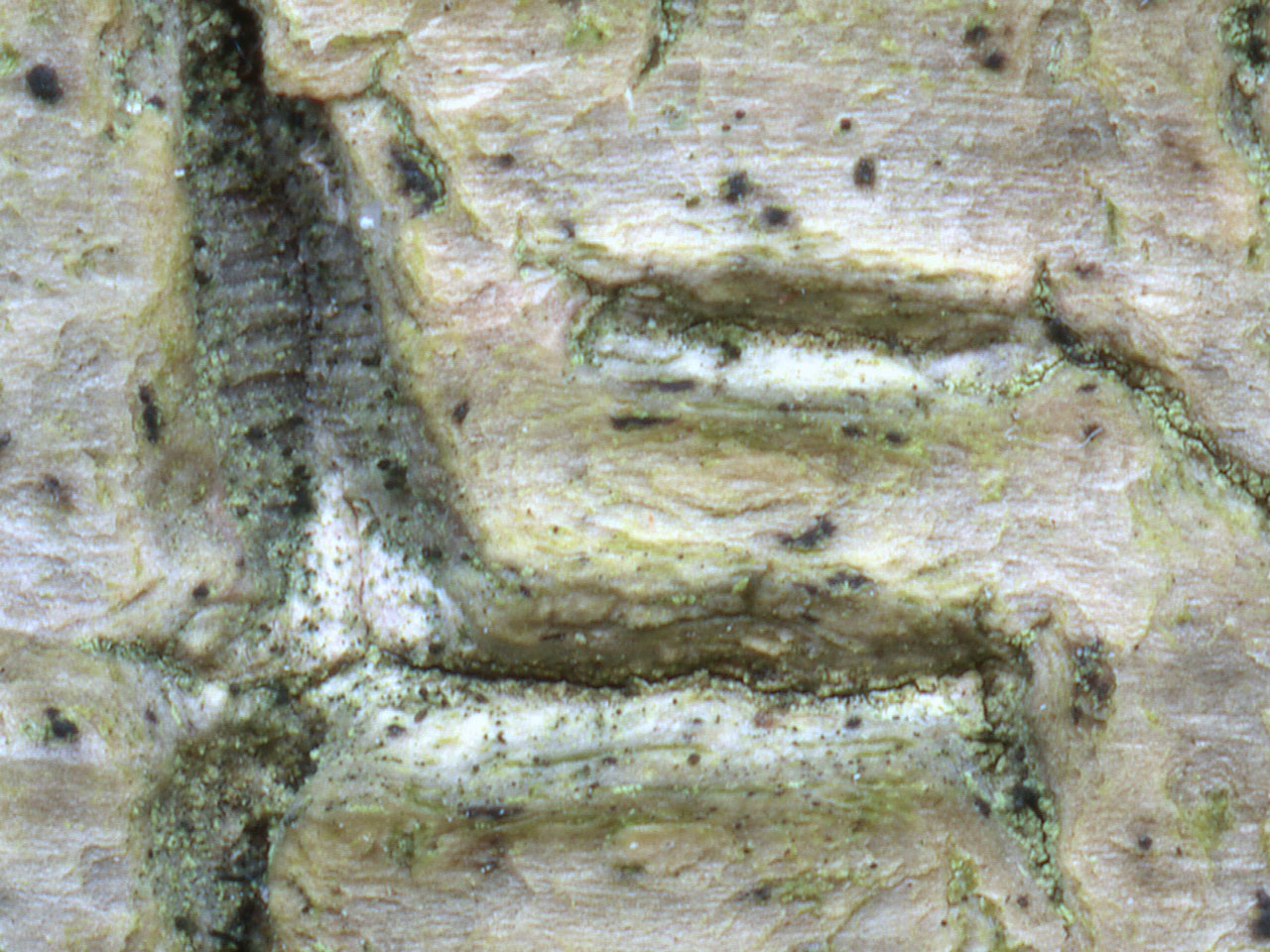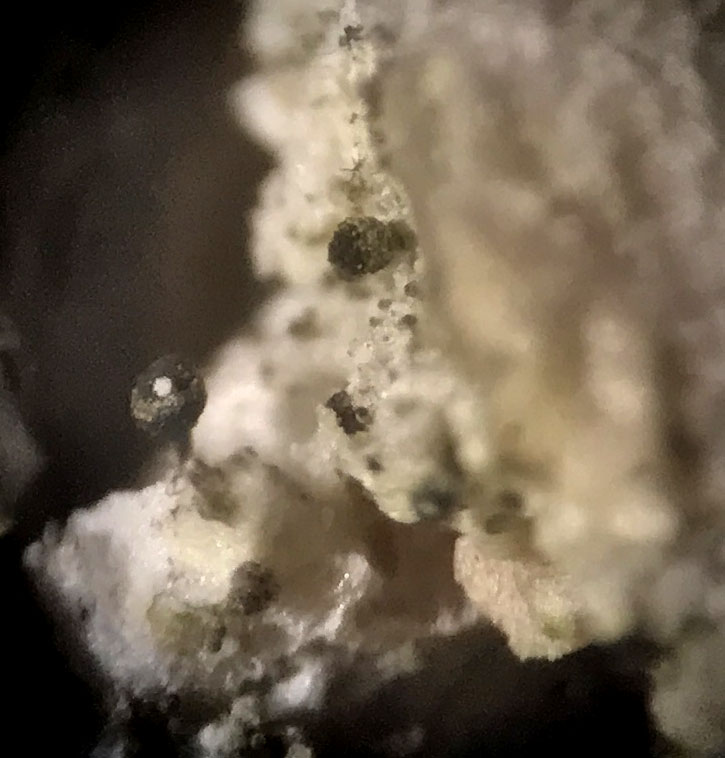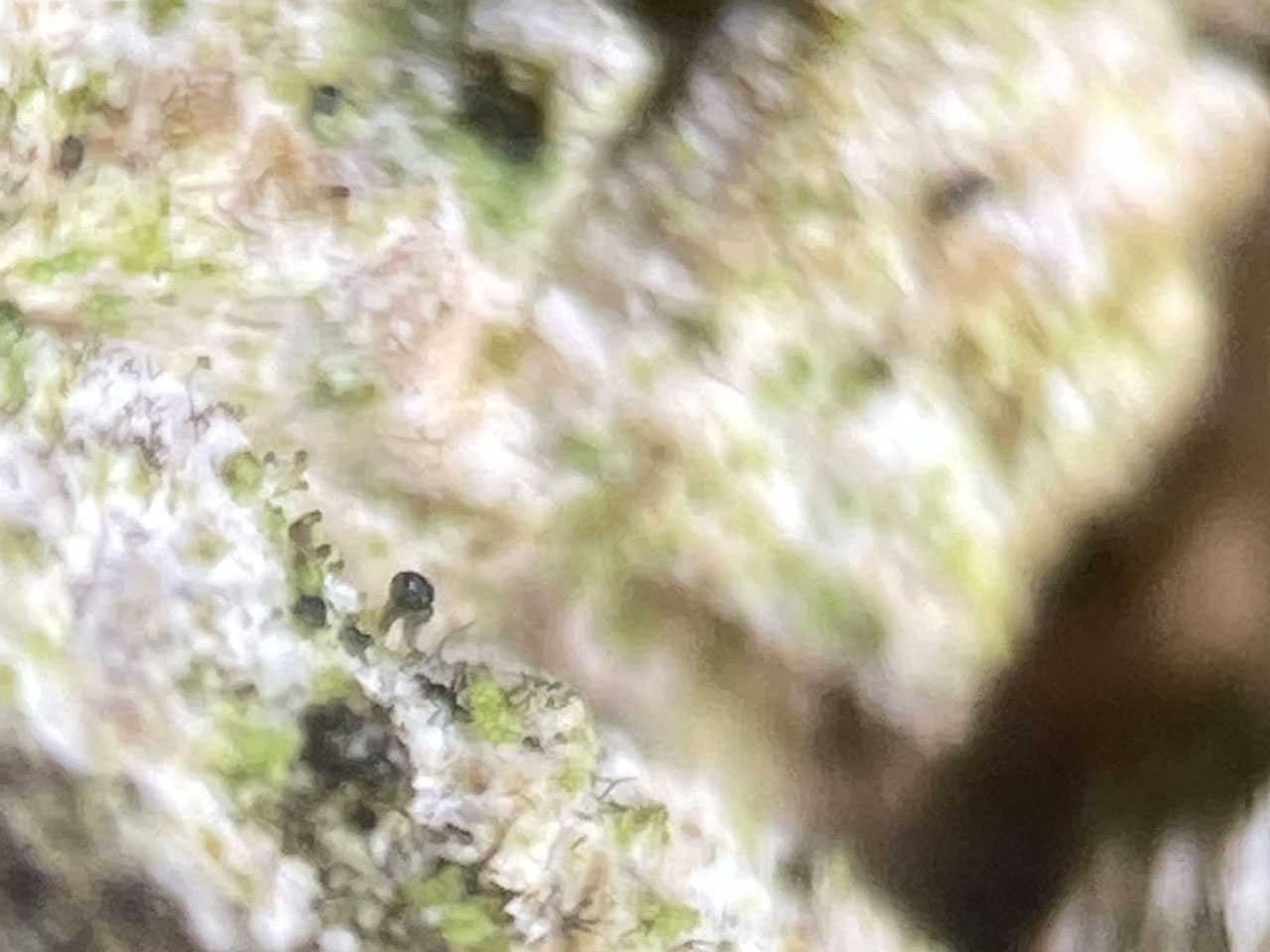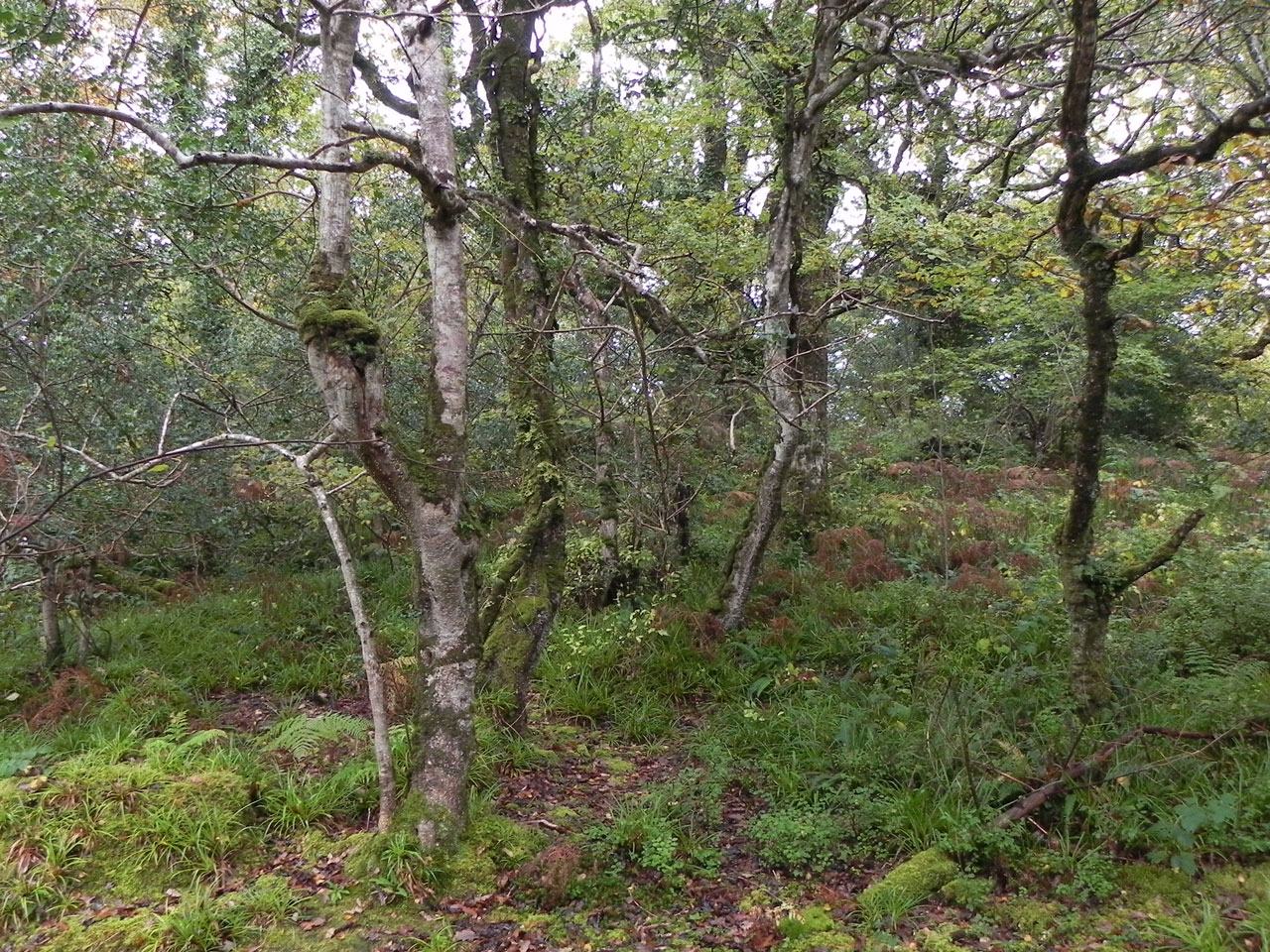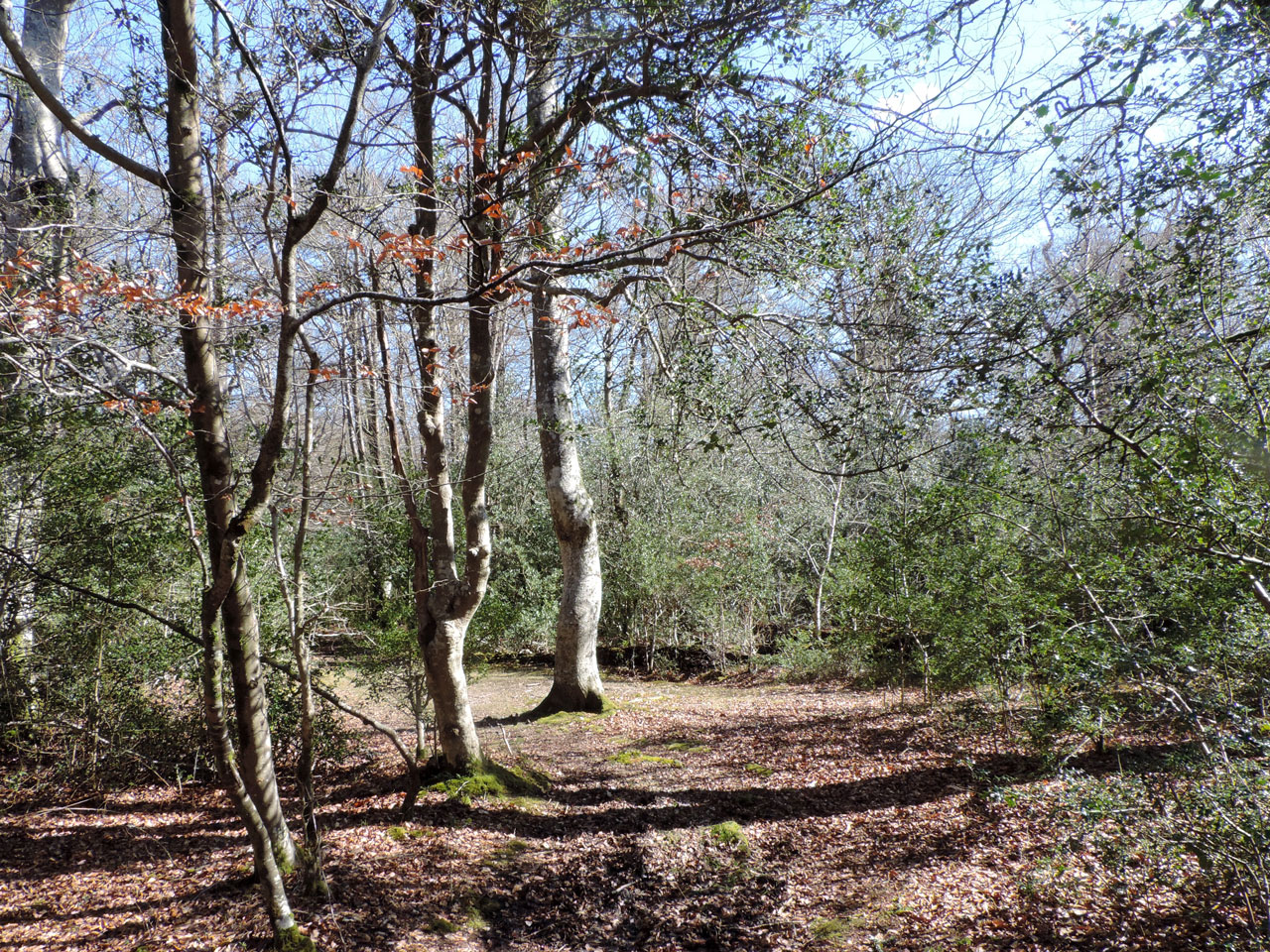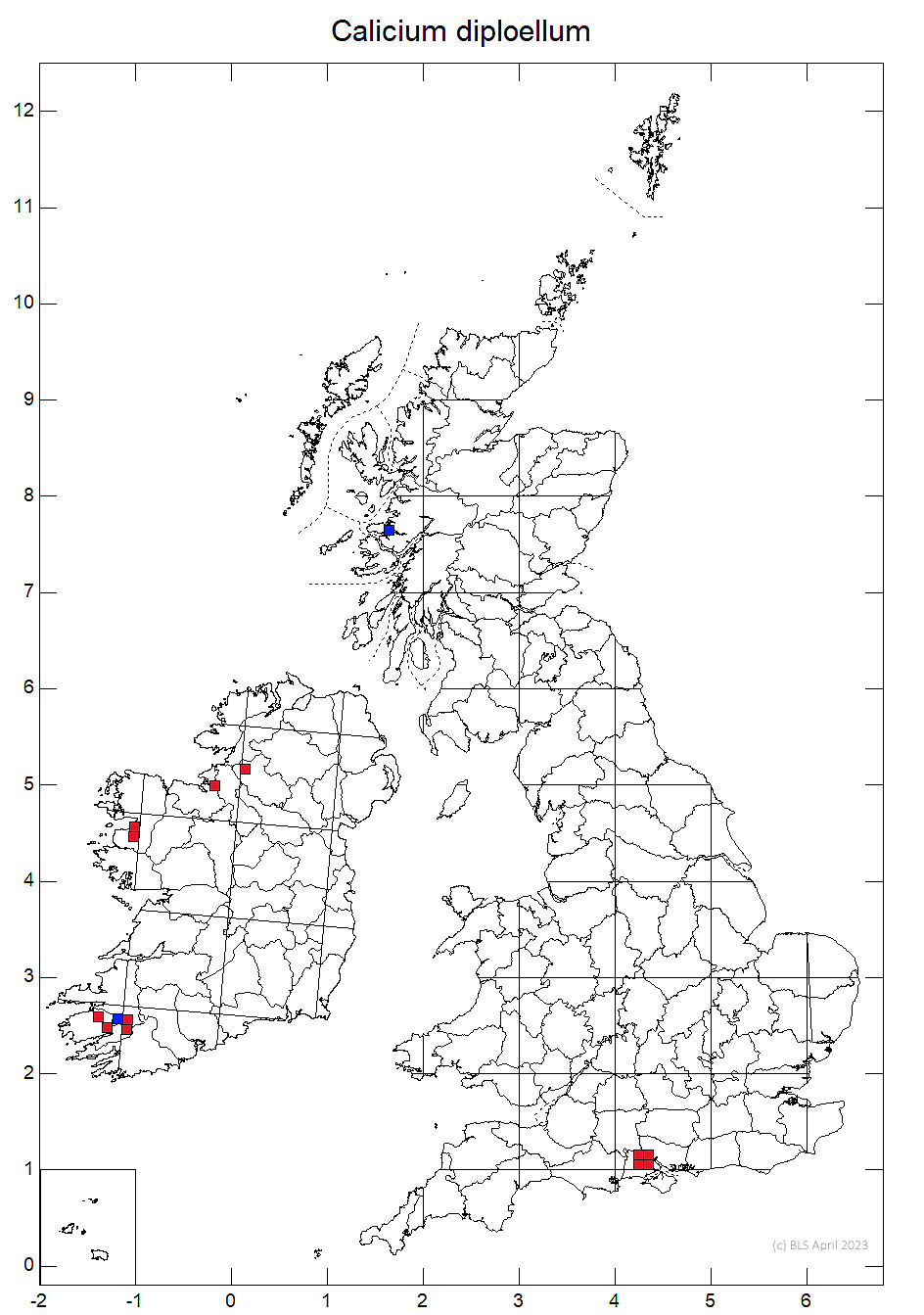Calicium diploellum
A tiny lichen, which is best found by carefully searching a specific niche on old Hollies in ancient pasture woodlands. Calicium diploellum is largely found within the lenticels on the dry side of old Hollies where they are not overgrown by other lichens. Of the two main species found on the dry sides of old Hollies, the common Lecanactis abietina, readily overgrows lenticels, while the non-lichenised localised old woodland species Mycoporum lacteum, leaves the lenticels bare. For this reason C. diploellum is mainly found in lenticels where they are surrounded by Mycoporum lacteum. These need to be searched for the distinctive green specking caused by the thallus of C. diploellum and these lenticels then examined carefully for the 0.1 – 0.2mm tall stalked apothecia of C. diploellum. This is easiest with a x20 illuminated hand lens.
Potentially under recorded, especially in western Ireland, but confined to sites with frequent ancient Hollies with a long continuity of old Hollies, which are rare in large areas of western Britain due the impact of increased sheep and deer winter browsing in the last few hundred years, which have eliminated old Holly, or confined it to cliffs.
Thallus very thin, grey-white to green, finely granular. Apothecia 0.1–0.2 mm tall, black, top-shaped; head 80–120 μm diam., often green-pruinose when young. Ascospores 6–9 × 3–4 (–4.5) μm, often remaining aseptate, with helically arranged ridges. The pruina contains vulpinic acid; no other lichen products reported.
A minute, poorly understood species; the ascospore ornamentation is particularly well developed. This species is difficult to spot due to its small size, it is best detected by looking for the green thallus coloration within lenticels and then searching for apothecia.
Usually inside the lenticels of dry Ilex bark, more rarely on the bark, on old trees, mainly found surrounded by Mycoporum lacteum, which does not overgrow the lenticels unlike Lecanactis abietina.

Very rare, N.W. Scotland (W. Inverness, Loch Sunart), S. England (Hampshire, New Forest), W. Ireland. Potentially overlooked on old Holly elsewhere. By 2025, as hoped, found in a relic stand of old Holly in the south west of Dartmoor, Devon.
A very rare species in Britain and Europe, confined to old Holly trees in old growth pasture woodlands in oceanic areas. Likely to be highly dependant on historic continuity of old Holly. As a result, there are limited areas of Atlantic woodland where it could survive, due to historic losses of old Holly. These losses were due to coppicing on enclsoure, or to increases in winter deer and sheep browsing in surviving pasture woodlands, especially in south west England, Wales and the west Highlands. Likely to be vulnerable to loss to deep shade if grazing is abandoned in surviving pasture woodland sites due to over regeneration of Holly.
Britain: Critically Endangered, International Responsibility species, listed as a BAP species
Scotland: Priority Taxon for Biodiversity in Scotland
Northern Ireland: Biodiversity Action Plan (BAP) Species
England: listed as BAP species for Britain, but discovered in England after the Section 41 species list was derived from the BAP species list so not added to the S41 list.
Cannon, P., Prieto, M., Coppins, B., Sanderson, N., Scheidegger, C. & Simkin, J. (2021). Caliciales: Caliciaceae, including the genera Acolium, Amandinea, Buellia, Calicium, Diploicia, Diplotomma, Endohyalina, Monerolechia, Orcularia, Pseudothelomma, Rinodina and Tetramelas. Revisions of British and Irish Lichens 15: 1-35.
Text by Neil A Sanderson, based Cannon et al (2021)
